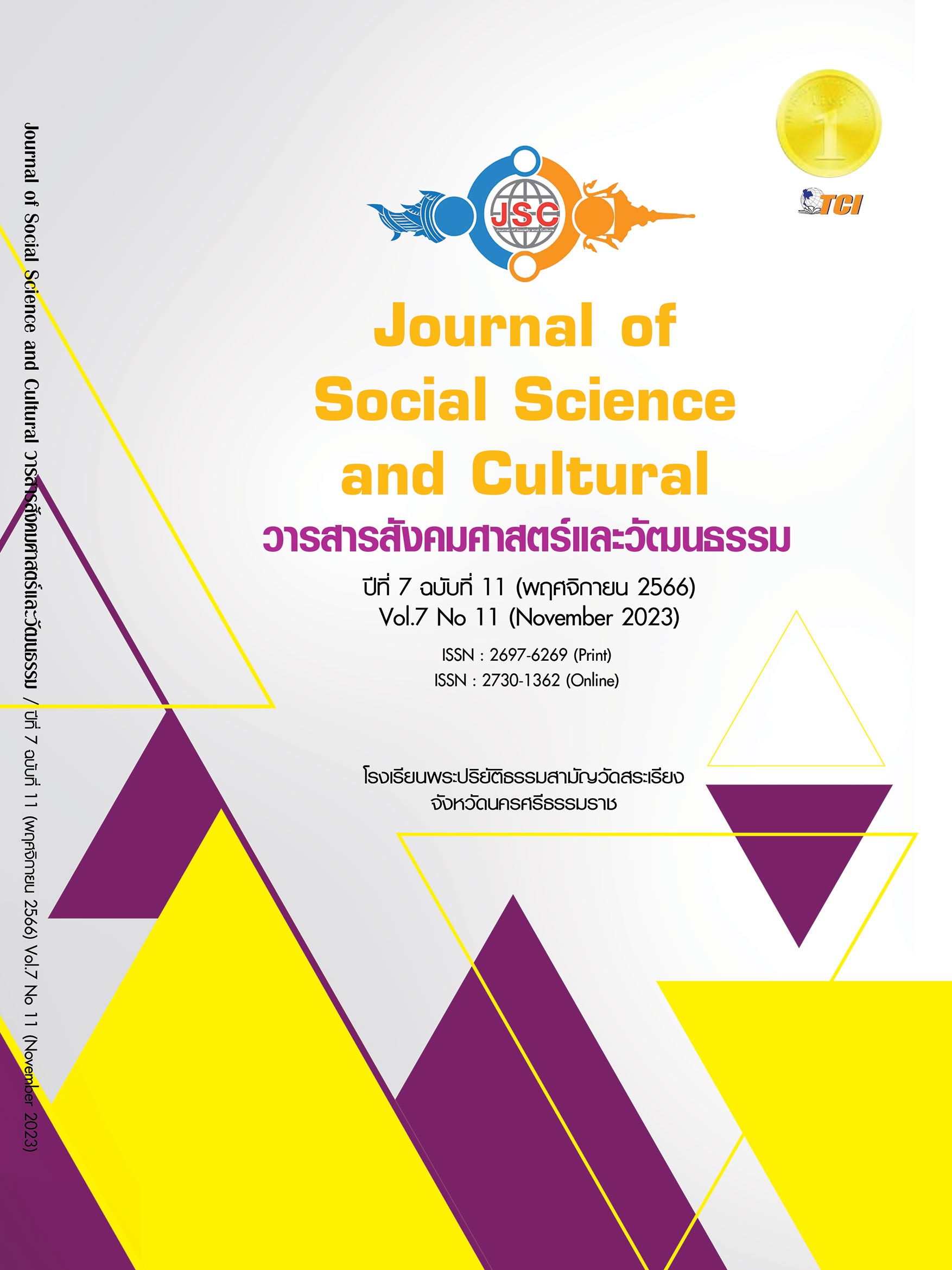CASUAL RELATIONSHIP OF LAW ENFORCEMENT INFLUENCING NOT - DRINKING AND DRIVING BEHAVIOR OF NORTHERN ADOLESCENTS
Main Article Content
Abstract
This research aims to 1) study not - drinking and driving behavior among adolescents in the northern region, 2) study factors influencing not - drinking and driving behavior among adolescents in the northern region, 3) develop the causal relationship model of the enforcement of laws that influencing adolescent not - drinking and driving behavior in the northern region. The research is quantitative, utilizing a questionnaire as a data collection tool from a randomly sampled group of 360 adolescents in the northern region. The data were analyzed using mean and standard deviation, and structural equation modeling. The research findings indicate that not - drinking and driving behavior of adolescents is at a moderate level. Factors influencing not - drinking and driving behavior among adolescents in the northern region are not - drinking and driving Intention, attitude, subjective norms, perceived behavioral control and perceived Legal measures at much level. The causal relationship model was congruent with the empirical data. At a .01 significant level, factors have positive direct influence on not - drinking and driving intention include attitude, subjective norm, perceived behavior control that explain variance of not - drinking and driving intention (R2) about 84%, factors have positive direct influence on not - drinking and driving behavior include not - drinking and driving intention, attitude, subjective norms, perceived behavioral control and perceived Legal measures respectively that explain variance of not - drinking and driving behavior (R2) about 80%.
Article Details
References
กรมควบคุมโรค. (2565). สถานการณ์การบริโภคเครื่องดื่มแอลกอฮอล์ของประชากรไทย พ.ศ. 2564. กรุงเทพมหานคร: กรมควบคุมโรค.
กรมควบคุมโรค. (2566). สถานการณ์อุบัติเหตุทางถนนของประเทศไทย. กรุงเทพมหานคร: กรมควบคุมโรค.
กระทรวงคมนาคม. (2566). แผนยุทธศาสตร์กองทุนเพื่อความปลอดภัยในการใช้รถใช้ถนนระยะ 5 ปี พ.ศ.2566 - 2570. กรุงเทพมหานคร: กระทรวงคมนาคม.
ธีระ สินเดชารักษ์ และคณะ. (2563). รายงานฉบับสมบูรณ์โครงการการศึกษาช่องว่างและแนวทางที่เหมาะสมเพื่อเพิ่มประสิทธิภาพการบังคับใช้กฎหมายต่อการลดพฤติกรรมการเมาแล้วขับบนท้องถนน. กรุงเทพมหานคร: สำนักงานกองทุนสนับสนุนการสร้างเสริมสุขภาพ.
Ajzen, I. (1991). The theory of planned Behavior. Organizational Behavior and human, An decision processes, 50(1),179-211.
Annamdevula, S. et al. (2023). Moral obligation for recycling among youth: extended models of the theory of planned behaviour. Young Consumers, 24(2), 165–183.
Best, J. W. & Kahn, J. V. (2014). Research in Education. (10th Ed.). Harlow England: Pearson Education.
Deng, Y. et al. (2023). Exploring influences on the intention of motorcyclists to drink and ride: An investigation in a fourth - tier city of China. Traffic Injury Prevention, 24(2),121-125.
Dobbs, P. D. et al. (2020). Intention to Use E - Cigarettes to Quit Smoking: A Reasoned Action Approach. American Journal of Health Education, 51(6),360-370.
Eisinga, R. et al. (2012). The reliability of a two - item scale: Pearson, Cronbach or Spearman - Brown. International Journal of Public Health, 58(4),637-642.
Fell, J. C. et al. (2014). Effects of enforcement intensity on alcohol impaired driving crashes. Accident Analysis and Prevention, 73(1), 181-186.
Hair, J. F. et al. (2010). Multivariate Data Analysis (7th ed.). New York: Pearson - Prentice Hall.
Hershberger, A. et al. (2018). The Theory of Planned Behavior and E - cig Use: Impulsive Personality, E - cig Attitudes, and E - cig Use. International Journal of Mental Health and , 16(2), 366-376.
Ishoy, G. A. (2016). The theory of planned behavior and policing: how attitudes about behavior, subjective norms, and perceived behavioral control affect the discretionary enforcement decisions of police officers. Criminal Justice Studies, 29(4), 345–362.
Jin, L. et al. (2021). Analysis on the influencing factors of driving behaviours based on theory of planned behaviour. Advances in Civil Engineering, 2021(1), 1-13.
Kline, R. B. (2015). Principles and practice of structural equation modeling (4th ed.). New York: The Guilford.
Lee, C. J. et al. (2016). Intentions and willingness to drive while drowsy among university students: An application of an extended theory of planned behavior model. Accident Analysis and Prevention, 93(1),113-123.
Lenk, K. M. et al. (2023). Alcohol enforcement in the United States from 2010 to 2019. Journal of Studies on Alcohol and Drugs, 84(3), 416-423.
Popa, B. (2019). Intentions to engage in forest law enforcement in Romania: An application of the theory of planned behavior. Forest Policy and Economics, 100(1), 33-43.
Potard, C. et al. (2018). Driving under the influence of alcohol and perceived invulnerability among young adults: An extension of the theory of planned behavior. Transportation Research Part F: Traffic Psychology and Behaviour, 55(1), 38-46.
Ronna, C. T. & Laurie C. (2003). Indexes of item - objective congruence for multidimensional items. International Journal of Testing, 3(2), 163-171.
Sanem, J. R. et al. (2015). Association between alcohol - impaired driving enforcement - related strategies and alcohol - impaired driving. Accident Analysis and Prevention, 78(1), 104-109.
Zhao, X. et al. (2022). Predicting smoking behavior: intention and future self - continuity among Austrians. Psychology, Health and Medicine, 27(5), 1042-1051.


